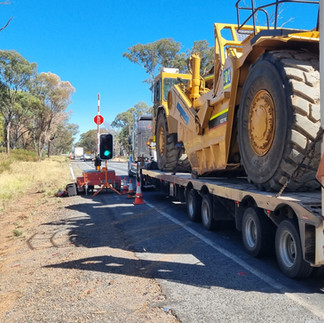#31 iMOVE Work Zone End-of-Queue Study
- Duc Phan
- Jul 14
- 2 min read
Temporary traffic management at roadwork sites is an ongoing challenge, where measures continue to evolve to keep workers and road users safe. Research shows that rear-end crashes in end-of-queue (EOQ) scenarios represent a high proportion of all crashes at roadwork sites. For example, a Queensland study published in 2020 found that 43% of police-reported crashes at roadworks were rear-end crashes[1]. In partnership with iMOVE and Transport for New South Wales (TfNSW), Deakin University researchers were engaged to identify and trial EOQ crash reduction measures in the largest Australian study of its kind to date. Commencing in mid-2022, the study was recently completed, and the project reports were published on the iMOVE website[2].
The main factors contributing to EOQ crashes are categorised in terms of driver behaviour, vehicle, environmental and work zone characteristics:
Driver behaviour & vehicle characteristics | Environment & work zone characteristics |
|---|---|
|
|
|
|
|
|
|
|
|
|
|
|
EOQ Treatment Trials
16 specific treatments (plus combinations) were trialled at 13 different NSW sites, with numbers of individual treatments trialled at each site ranging from 2 to 9, averaging 5.6 treatments per site. These treatments included different types and combinations of static signs, variable message signs (VMS), portable rumble strips, UHF radio messages, temporary line marking, narrowed lane width, queue warning systems (QWS), police presence, portable traffic lights (PTL), and portable boom. The study used a pre/post treatment approach to measure effectiveness against baseline conditions on variables including speed reduction and rear-end crash risk.
Key Findings
The project reports present findings separately for different work zone sections, such as advance warning and transition areas. Overall, several treatments were associated with ‘large’ or ‘very large’ reductions in speeding and decreased rear-end crash risk. These included PTL linked electronically with vehicle-activated signs (eSAS) placed approximately 300m and 450m upstream from the control point. These were highly effective with or without police presence, which on its own showed very large speed reductions but a possible increase in rear-end crash risk (possibly associated with heavy braking). Other treatments associated with large or very large speed reduction but inconclusive on crash risk included narrowed lane width (‘gateway’), static queue warning signs with flashing beacons, portable boom + PTL, and one of four different rumble strip configurations.
[1] Blackman et al. (2020). Understanding vehicle crashes in work zones. Traffic Injury Prevention 21(3), 1-6.
[2] Debnath et al. (2025). Working near traffic – Work Zone End of Queue Study Final Report (iMOVE Project 1-064). Deakin University: Geelong.










